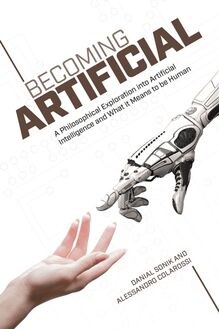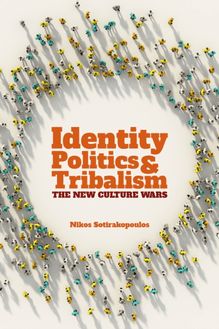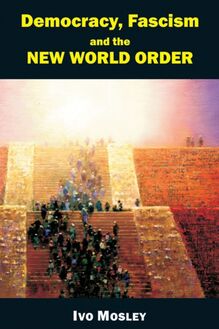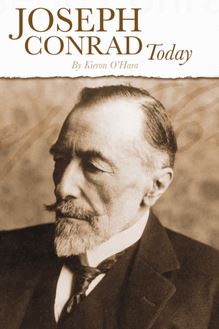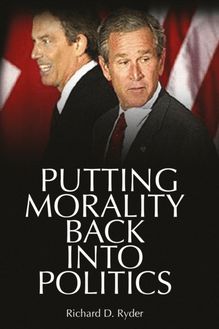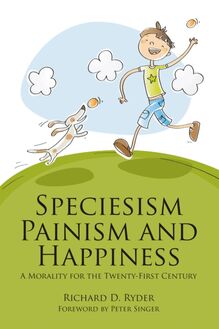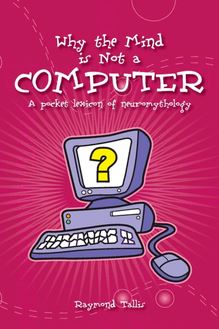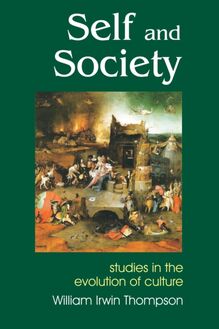-
 Univers
Univers
-
 Ebooks
Ebooks
-
 Livres audio
Livres audio
-
 Presse
Presse
-
 Podcasts
Podcasts
-
 BD
BD
-
 Documents
Documents
-
- Cours
- Révisions
- Ressources pédagogiques
- Sciences de l’éducation
- Manuels scolaires
- Langues
- Travaux de classe
- Annales de BEP
- Etudes supérieures
- Maternelle et primaire
- Fiches de lecture
- Orientation scolaire
- Méthodologie
- Corrigés de devoir
- Annales d’examens et concours
- Annales du bac
- Annales du brevet
- Rapports de stage
La lecture à portée de main
Vous pourrez modifier la taille du texte de cet ouvrage
Découvre YouScribe en t'inscrivant gratuitement
Je m'inscrisDécouvre YouScribe en t'inscrivant gratuitement
Je m'inscrisEn savoir plus
Vous pourrez modifier la taille du texte de cet ouvrage
En savoir plus

Description
Sujets
Informations
| Publié par | Andrews UK |
| Date de parution | 14 mars 2017 |
| Nombre de lectures | 0 |
| EAN13 | 9781845406738 |
| Langue | English |
Informations légales : prix de location à la page 0,0324€. Cette information est donnée uniquement à titre indicatif conformément à la législation en vigueur.
Extrait
The Modernization Imperative
Bruce Charlton and Peter Andras
IMPRINT ACADEMIC
2017 digital version converted and published by
Andrews UK Limited
www.andrewsuk.com
Copyright © Bruce Charlton and Peter Andras, 2003, 2017
The moral rights of the authors have been asserted
No part of any contribution may be reproduced in any form without permission, except for the quotation of brief passages in criticism and discussion.
Imprint Academic
PO Box 200, Exeter EX5 5YX, UK
Acknowledgements
Bruce Charlton would like to thank Keith Sutherland for initial stimulation and sustained support of this project; the Literary and Philosophical Society of Newcastle upon Tyne where most of the book was written; Gill, Billy and Nancy.
Peter Andras would like to thank George Erdos, John Lazarus, Gilbert Roberts and other colleagues who provided a pleasant and supportive scientific environment.
A Note on Systems Theory
Our analysis is derived from a version of Systems Theory, which is sufficiently unfamiliar to require explanation. Since no accessible account of Systems Theory currently exists we have provided one as an Appendix.
Introduction
This book argues that contemporary society in Western democracies is generally misunderstood. Commentators typically assume that we still live in a ‘pyramidal’ hierarchical state that is dominated either directly by the government, or indirectly by capitalist economics. It is assumed that social cohesion is imposed on the population by a combination of force and propaganda. Such widespread views contribute to a pessimistic attitude to the present and a fearful attitude to the future, yet neither view is correct.
The reality is that we live in a fundamentally pluralistic society divided into numerous ‘modular’ social systems each performing different functions; these include politics, public administration, the armed forces, law, economics, religion, education, health and the mass media. Because each is specialized, none of these systems are dominant and there is no overall hierarchy of power between them. Modernizing societies are therefore structured more like a mosaic than a pyramid.
The principal defining feature of modernizing societies is the tendency for permanent growth in the adaptive complexity of the social systems. Systems demonstrate ever-greater specialization of functions and progressively increasing outputs - for example the trends for more division of labour and continued growth in the economy. Functional specialization is a consequence of the potential for more complex systems to be more efficient. Social cohesion is therefore an emergent consequence of a circular ‘scissors–rock–paper’ mutual influence between social systems. In order to function, each system relies upon other systems to function. Growth in one system depends on growth in others. Interdependence elicits the mechanisms that maintain cohesion.
Growth in complexity is shaped by selection processes which maintain the functionality of social systems. The best known example of selection is the self-adjusting market economy, but other paradigm cases include science and democratic politics. All these selected social systems rely on generating a surplus of variants (e.g. economic goods, scientific theories or political parties), which are subjected to a process of competition, by which some system variants are amplified and others suppressed. Selection processes have great power since they are capable of self-correction, learning and creative discovery of new solutions.
The process of modernization is both inevitable and, on the whole, a good thing. Modernization is very highly probable because modernizing societies are more powerful than ‘traditional’ societies, and it is preferable to the alternatives because modernizing societies are better and more hopeful places to live for most of the population, most of the time. The combination of necessity and desirability constitutes the modernization imperative.
Making the best of modernization requires a more accurate understanding of its nature and processes than exists currently. Understanding should lead to a more optimistic and confident attitude towards the future. Societies that are able to seize the modernization imperative will be those with potential to reap the most benefits while minimizing the inevitable disadvantages.
The proper question should not be whether society should modernize, but how.
Chapter 1: Defining Modernization
I. Modern societies
Modernization originally referred to the contrast and transition between a ‘traditional’ agrarian society and the kind of ‘modern’ society that is based on trade and industry. For example traditional and modern would describe the difference between medieval England and late-Victorian Britain.
A traditional society is ‘vertically’ organized by hierarchical division by class or caste - a specialization of prestige. But a modern society is ‘horizontally’ organized by function, such that the major functions are performed by modular social systems. These major social systems include the political system, the public administration (civil service), the armed forces, the legal system, the economy, religion, education, the health service and the mass media. So, while a traditional society is like a pyramid of top-down authority, a modern society is more like a mosaic held together by the cement of mutual inter-dependence.
A further contrast is that traditional societies consist of a single, unified system with a single centre of power; while a modern society is composed of a plurality of autonomous systems which interact with each other, influence each other, but do not absorb each other. Modern societies are fundamentally heterogeneous with multiple centres of power; and this is no accident but intrinsic to their nature. Indeed, the continued process of modernization tends to break down any remaining vestiges of hierarchy and centralized domination of social functions.
Modern and traditional societies differ according to their complexity of organization and their rate of growth in complexity. Modern societies are much more complex than traditional societies and are growing ever-more complex. Traditional societies are simpler and have a static structure (or one that increases its complexity so slowly or erratically that they perceive themselves as static). Complexity is favoured by selection processes, which are more powerful in modernizing societies, because specialization of function enables greater efficiency (for instance when division of labour, or increased trade and communications enables greater efficiency). Increasing efficiency then frees resources and drives further growth. [1]
Modern societies are based upon growth and the expectation of growth. Indeed the cohesion of modernizing societies requires more or less continuous growth. This is why it is impossible to stop modernization at a particular favoured point - if growth stops then the nature of society reverts towards a traditional form. Growth in modern societies includes economic growth (increasing output and productivity), but also entails ‘cognitive growth’ - which means an increase in knowledge and capability across a wide range of activities such as science, technology and political administration.
Traditional societies exhibit division of labour and cognitive specialization, but their complexity is constrained by the hierarchical structure into three main categories of peasants, warriors and priests (Gellner’s ‘plough, sword and book’). Warriors and priests constitute the ruling class who are concerned mainly with maintaining social cohesion by means of physical coercion and ideological propaganda. Peasants - whose role is agricultural production - constitute the vast majority of the population of traditional societies. Beyond the division into warriors, priests and peasants there is only a small ‘middle class’ of technical specialists (for example the different types of craftsmen). But in modern societies the ‘middle class’ is dominant: the vast majority of the population is cognitively specialized, and there are many thousands of distinctively different occupations.
A deeper understanding of modernization reveals that one vital qualitative difference between traditional and modern is the difference between a unified social system in which all activity is (in principle) subordinated to politics (‘politics’ being variably combined from different proportions of military force and theological legitimation); and a modern society in which politics does not dominate all activities, but in which there is instead a fundamental and continually-increasing functional specialization such as ever more division of labour into more different types of job.
The categorization of societies into traditional and modern is crude, and of limited usefulness. At present almost all societies are at least partially modernized. On the other hand, no society is ‘completely’ modernized and the rate of modernization is variable between societies, and between systems in a society. Pre-modern forms are obvious in all societies. There has always (so far) been scope for further increase in adaptive complexity, in a positive feedback cycle where increased productivity fuels increased complexity, which in turn fuels increased productivity.
Since modernization is dynamic, it is more useful to consider modernization as a process than as a state. A ‘modern’ society based on the process of modernization: this is ‘modernity’. Modernization can be seen as the general mechanism by which the social transformation from agricultural dominance to domination by trade and industry takes place, and the permanent continuation of this process. The difference
-
 Univers
Univers
-
 Ebooks
Ebooks
-
 Livres audio
Livres audio
-
 Presse
Presse
-
 Podcasts
Podcasts
-
 BD
BD
-
 Documents
Documents
-
Jeunesse
-
Littérature
-
Ressources professionnelles
-
Santé et bien-être
-
Savoirs
-
Education
-
Loisirs et hobbies
-
Art, musique et cinéma
-
Actualité et débat de société
-
Jeunesse
-
Littérature
-
Ressources professionnelles
-
Santé et bien-être
-
Savoirs
-
Education
-
Loisirs et hobbies
-
Art, musique et cinéma
-
Actualité et débat de société
-
Actualités
-
Lifestyle
-
Presse jeunesse
-
Presse professionnelle
-
Pratique
-
Presse sportive
-
Presse internationale
-
Culture & Médias
-
Action et Aventures
-
Science-fiction et Fantasy
-
Société
-
Jeunesse
-
Littérature
-
Ressources professionnelles
-
Santé et bien-être
-
Savoirs
-
Education
-
Loisirs et hobbies
-
Art, musique et cinéma
-
Actualité et débat de société
- Cours
- Révisions
- Ressources pédagogiques
- Sciences de l’éducation
- Manuels scolaires
- Langues
- Travaux de classe
- Annales de BEP
- Etudes supérieures
- Maternelle et primaire
- Fiches de lecture
- Orientation scolaire
- Méthodologie
- Corrigés de devoir
- Annales d’examens et concours
- Annales du bac
- Annales du brevet
- Rapports de stage

